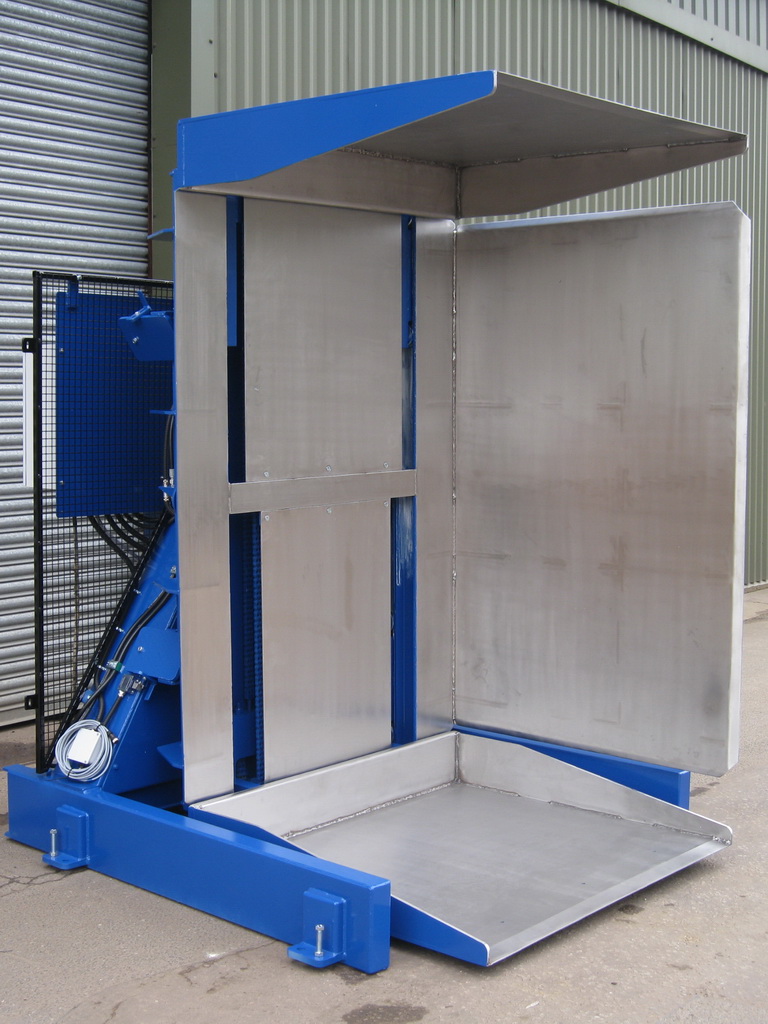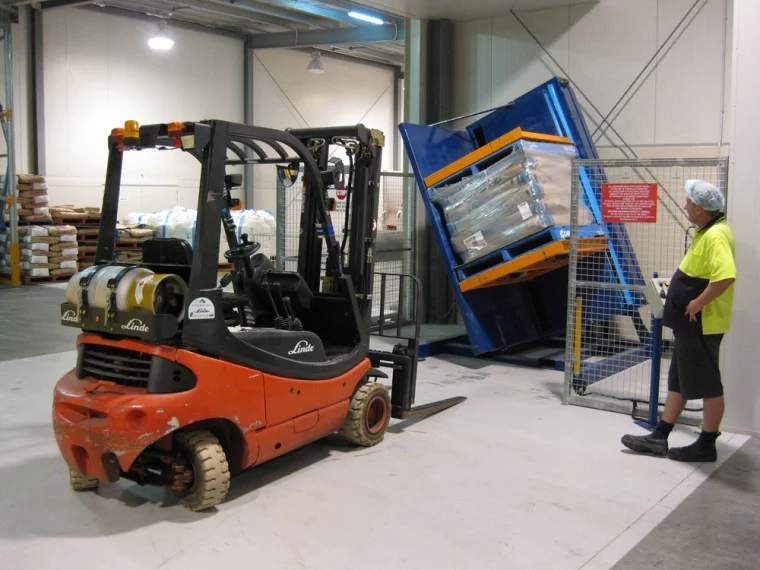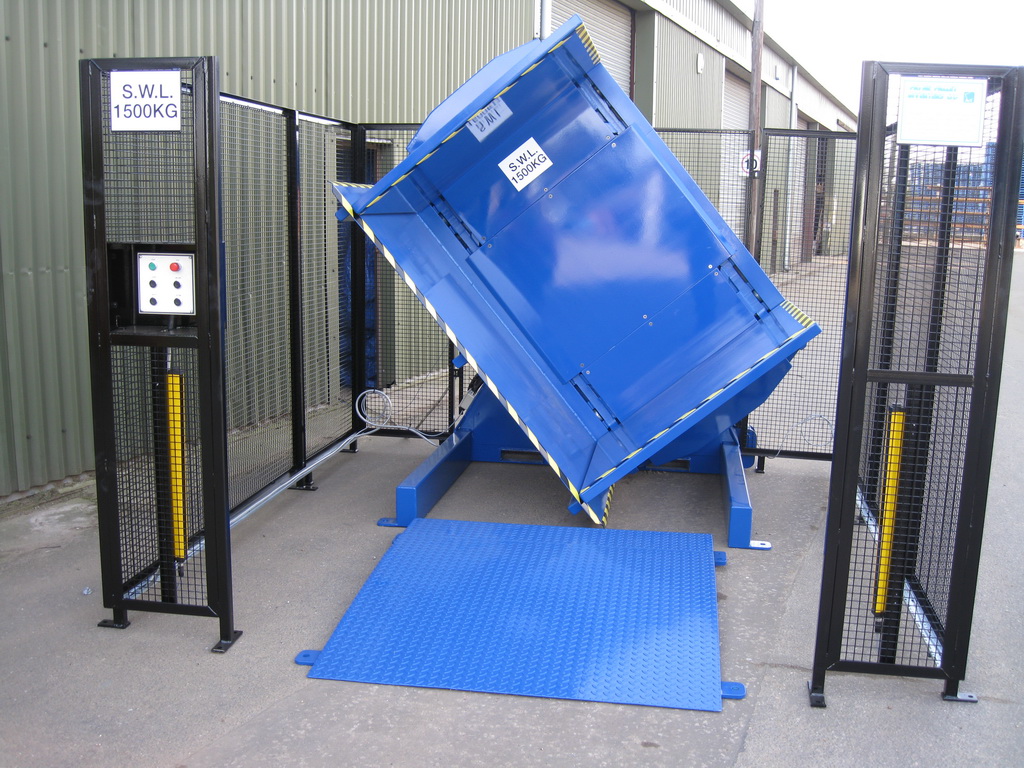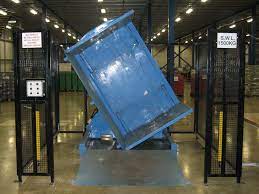The Revolutionary Application of Mold Flipper in the Automotive Injection Mold Industry
In the high-stakes world of automotive manufacturing, every second counts. Production lines are timed to perfection, and any delay can cause a costly ripple effect. Yet, a critical and often overlooked bottleneck persists in many facilities: the process of mold maintenance. The traditional method of flipping massive, multi-ton injection molds using overhead cranes and chains is slow, inefficient, and dangerously unpredictable. I’ve seen firsthand how an entire production schedule can be thrown into chaos by this single, archaic step. You worry about the risk of a catastrophic failure, the potential for injuring your skilled team, and the immense cost of a damaged mold. There is a better way. A purpose-built solution exists that transforms this high-risk task into a safe, controlled, and remarkably fast process.
A mold flipper, also known as a mold upender or tilter, is a specialized piece of industrial equipment designed to safely and efficiently rotate heavy molds, typically by 90 or 180 degrees. Its revolutionary application in the automotive injection mold industry stems from its ability to drastically cut down on mold maintenance and changeover time. It nearly eliminates the severe safety hazards associated with traditional crane-and-chain methods. This directly improves production uptime, which boosts a factory's overall output and profitability. It is a simple machine that solves a very complex problem.

You might be thinking that your current methods, while not perfect, get the job done. I understand that way of thinking. As an engineer who has worked on the factory floor, I know the "if it isn't broken, don't fix it" mindset. But in today's competitive market, "not broken" isn't good enough. The shift from a crane to a dedicated mold flipper is about more than just incremental improvement. It is a strategic move that fundamentally changes your operational capability. Let's explore exactly why this machine is such a critical asset for any modern automotive parts manufacturer.
Why is traditional mold handling a bottleneck in automotive manufacturing?
Your production schedule is a tightly orchestrated machine. Every minute is planned. But then, a mold needs cleaning or repair. The entire line might need to stop. Your team begins the slow, careful process of rigging heavy chains to a multi-ton block of steel. An overhead crane, your most versatile piece of lifting equipment, is now tied up for a single task. Everyone on the floor watches as the mold is slowly, precariously lifted and turned. This process is a massive drain on time and resources.
Traditional mold handling using overhead cranes is a major bottleneck because it is inherently slow, labor-intensive, and poses significant safety risks. This old method consumes valuable crane time that could be used for moving coils, loading presses, or other production-critical tasks. The setup, rigging, and execution of a single mold flip can take an hour or more. In the fast-paced automotive sector, where a line stoppage can cost thousands of dollars per minute, this downtime is unacceptable. It’s a bottleneck that limits your entire factory's potential output.

The Hidden Costs of the Old Way
When I work with clients, I always ask them to look beyond the obvious. The problem with crane-based mold flipping isn't just the time you see on the clock. There are significant hidden costs. First, you have the labor cost. It often requires two or three skilled riggers and a dedicated crane operator. These are experienced team members who could be doing more valuable work. Second, there's the equipment cost. Your main factory crane is occupied, creating a new bottleneck for any other task that requires heavy lifting. Production might slow down in other areas simply because the crane is busy.
Most importantly, there is the cost of risk. A complex mold for an automotive bumper or dashboard can cost hundreds of thousands of dollars. The forces involved in turning it with chains are uneven. This can cause warping or damage to the mold's delicate surfaces over time. And then there is the ultimate risk: a dropped mold. This is a catastrophic event that can destroy the mold, damage the press, and, worst of all, cause serious injury or death. This risk, however small you perceive it to be, carries an infinite cost.
How It Disrupts Your Entire Production Flow
A factory is a system. A delay in one area always affects others. Let’s trace the ripple effect of a slow mold change. The injection molding machine sits idle, not producing parts. This means the assembly line downstream will soon run out of components. Your inventory buffers start to deplete. To catch up, you might have to run the line on overtime, increasing your energy and labor costs. The entire production schedule becomes fragile and reactive. You lose the ability to plan effectively because a routine maintenance task introduces a massive variable of uncertainty. It's a constant source of stress on your planners, your operators, and your bottom line.
| Metric | Traditional Crane Method | Dedicated Mold Flipper |
|---|---|---|
| Time per Flip | 45-90 minutes | 3-5 minutes |
| Personnel Required | 2-3 (Rigger, Operator) | 1 (Operator) |
| Safety Risk | High (Dropping, Swinging) | Very Low (Controlled) |
| Crane Occupancy | 100% of process time | 0% (Frees up crane) |
| Mold Stress | High (Uneven forces) | Minimal (Even support) |
| Process Consistency | Low (Depends on skill) | High (Repeatable) |
How does a mold flipper precisely solve safety and efficiency issues?
As a factory owner, I know that the safety of my team is my number one responsibility. The thought of a preventable accident is what keeps people like us up at night. The possibility of a heavy mold slipping from its chains is a constant, low-level source of anxiety in any plant that uses traditional methods. Relying on "we've been lucky so far" is not a safety strategy. It’s a gamble. One small miscalculation, one frayed strap, or a moment of inattention can lead to disaster.
A mold flipper solves these safety and efficiency issues by its fundamental design. It is an engineered solution for a specific problem. It uses a strong, stable platform and a powerful, controlled mechanical or hydraulic system to securely clamp the mold before rotation. This completely eliminates the dangerous balancing act of using cranes and chains. The entire process of rotating the mold is smooth and contained within the machine's footprint. This not only prevents accidents but also transforms the task from a high-skill, high-risk operation to a routine, low-risk procedure. Efficiency is the natural byproduct of this safety. The process is reduced from over an hour to just a few minutes, often managed by a single operator pushing a button.

The Engineering Behind the Safety
Let's look closer at how the machine works. I’ve always been fascinated by simple, robust engineering. A mold flipper is a perfect example. It typically consists of two heavy-duty platforms, or tables, that form an L-shape. The mold is placed on the bottom platform. Strong hydraulic or mechanical clamps then secure the mold to the tables. The machine's center of gravity is kept very low.
When the operator initiates the sequence, the entire structure rotates smoothly around a fixed pivot point. The mold is supported across its entire surface throughout the turn. There are no swinging motions, no shock loads, and no uneven pressure points. The system is equipped with safety interlocks. For example, the rotation cannot start until the clamps confirm they are secure. Emergency stops are readily accessible. This is the difference between a generalized tool (a crane) and a specialized solution. The mold flipper is built for one purpose, and it does that purpose with unparalleled safety.
A Quantum Leap in Efficiency
The efficiency gains are just as dramatic as the safety improvements. Consider a typical mold maintenance workflow. With a crane, you bring the mold to an open laydown area, perform the slow flip, and then begin the work. With a mold flipper, you can create a dedicated, highly efficient maintenance station. The forklift or crane places the mold directly onto the flipper. The operator flips it in under five minutes. The maintenance team can begin work immediately.
This speed has a massive compounding effect. Machine downtime is slashed. Your expensive injection molding machines spend more time making parts and less time waiting. This directly increases your plant's total capacity. You can meet tighter deadlines and take on more orders without investing in new molding machines. You also free up your skilled riggers and your main crane to focus on other value-added tasks. This simple change elevates the efficiency of your entire facility.
| Step | Traditional Crane Method | Mold Flipper Method |
|---|---|---|
| 1. Preparation | Clear large area, get riggers | Place mold on flipper |
| 2. Rigging | Attach chains/straps (15-20 min) | N/A |
| 3. Lifting & Turning | Slow crane operation (10-15 min) | Push button (2 min) |
| 4. Lowering & Unrigging | Lower mold, remove chains (10 min) | N/A |
| 5. Cleanup | Store rigging gear | Ready for work |
| Total Time | ~45 Minutes | ~3 Minutes |
What are the key ROI considerations when investing in a mold flipper?
As a business owner, I look at every equipment purchase through the lens of return on investment (ROI). It’s not just about the cost of the machine; it’s about the value it brings to the entire operation. A new piece of equipment can look impressive on the factory floor, but if it doesn't positively impact the bottom line, it's not a smart investment. You might worry that the upfront cost of a mold flipper is a major capital expense that will take years to pay back.
The ROI for a mold flipper is one of the most direct and easy-to-calculate cases in factory equipment. The return is not based on abstract concepts; it's based on tangible, measurable savings in downtime, labor, and safety. When you properly analyze these factors, you’ll find the payback period is often surprisingly short. A mold flipper isn't a cost center. It is a profit-generating asset.

Calculating the Tangible Returns
Let's break down the numbers. The most significant factor is reduced machine downtime. You need to know the cost of one hour of downtime for your injection molding machine. Let's say it's $500/hour (a conservative estimate). If a traditional mold flip takes one hour and a mold flipper takes five minutes, you save 55 minutes of downtime for every single flip. If you service one mold per day, that’s a savings of nearly $460 every day. Over a year, that single factor alone adds up to well over $100,000 in recovered production.
Next, consider labor. You go from needing a three-person team (two riggers, one crane operator) to a single operator for five minutes. You are saving hours of skilled labor costs every day. Then there's the reduction in mold damage. By eliminating the stress of chain handling, you extend the life of your expensive molds, delaying costly repairs or replacements. Finally, consider the cost of an accident. While you can't budget for it, you can invest to prevent it. The cost of a single major accident—in terms of medical bills, insurance premium hikes, regulatory fines, and lost production—can easily exceed the cost of the mold flipper itself.
Building Your Business Case
When presenting this to your financial team or partners, a clear framework is essential. It moves the conversation from "it feels safer" to "it will generate this much value." You are not just buying a machine; you are investing in uptime.
Here is a simplified table to help you build your own business case. Fill it in with your factory's specific numbers.
| ROI Calculation Element | Your Estimated Value (per year) |
|---|---|
| A. Downtime Savings | (Cost of downtime/hr) x (Hrs saved/flip) x (Flips/yr) |
| B. Labor Savings | (Labor cost/hr) x (Man-hours saved/flip) x (Flips/yr) |
| C. Crane Availability Gain | (Value of crane time/hr) x (Hrs freed up/yr) |
| D. Reduced Mold Repair Costs | Estimated annual savings from gentle handling |
| E. Accident Prevention Value | (Insurance premium reduction + Avoided potential cost) |
| Total Annual Savings (A+B+C+D+E) | $XXX,XXX |
| Payback Period | (Cost of Mold Flipper) / (Total Annual Savings) |
When you run these numbers, the strategic value becomes crystal clear. For most active automotive plants, the payback period is between 12 and 24 months.
My Perspective: It's More Than a Machine, It's a Strategy
I’ve been around packing and handling machinery my whole career. I started as an engineer on the floor, and now I run my own factory. I've seen a lot of companies buy equipment. Many of them look at a machine like a mold flipper and they only see steel, motors, and a price tag on an invoice. That view is incredibly limiting.
When you see only the machine, you miss the bigger opportunity. You end up just replacing one task with a slightly faster task. But you don't fundamentally improve your overall system. This is why some big technology investments fail to deliver the results people hoped for. I've learned that the real value comes when you see this equipment not just as a tool, but as a strategic enabler. It's a key that unlocks a completely new and better way of operating.
From my experience, a mold flipper is not just a device to turn molds. It's a strategic asset that transforms your entire maintenance workflow, your safety culture, and your data strategy. When you view it as the central hub for mold handling, you can re-engineer your whole process for maximum efficiency. This paves the way for deeper integration with your factory's digital systems. The returns you get are far greater than just the time saved on the initial task.

From Isolated Task to Integrated Workflow
The most successful companies I've worked with don't just buy a mold flipper and place it in a corner. They redesign their mold maintenance area around it. The flipper becomes the heart of the mold shop. Molds come from the press and go directly to the flipper. It gets flipped, and then moves to a dedicated work station right next to it for cleaning and repair. Everything is streamlined. The flow is logical and fast.
You can develop Standardized Operating Procedures (SOPs) that are built on the speed and safety of the machine. Your team knows exactly what to do. The process becomes predictable and repeatable. This eliminates uncertainty. It improves morale because you are giving your team the best tools and a safer environment. You are showing them you value their time and their well-being. This is how you build a world-class operation. You don't just buy equipment; you build intelligent workflows around that equipment. This is the difference between simply spending money and making a true strategic investment.
A Stepping Stone to Industry 4.0
This is where things get really exciting for a forward-thinking leader. A mold flipper can be a simple, mechanical machine. Or, it can be your first step toward a smarter factory. This directly addresses the goal of digitalization. Think about what we can add to this machine. We can install load sensors to verify the weight of each mold, ensuring it's within the machine's capacity. We can add an RFID or barcode scanner. Now, every time a mold is flipped, the machine automatically logs which mold it is.
We can add a cycle counter. This data—mold ID, weight, date and time of service, number of cycles—can be sent directly to your Manufacturing Execution System (MES). Your "dumb" piece of steel is now a smart, data-gathering node on your factory floor. You can use this data for predictive maintenance on the molds themselves. For example, your MES can flag a mold for inspection after a certain number of production cycles have been logged. This is how you move from being reactive to being proactive. It all starts with seeing a machine not for what it is, but for what it can become as part of a larger, connected system.
Conclusion
A mold flipper is not just an equipment upgrade. It is a foundational investment in safety, efficiency, and future-proofing your automotive manufacturing operations for years to come.





